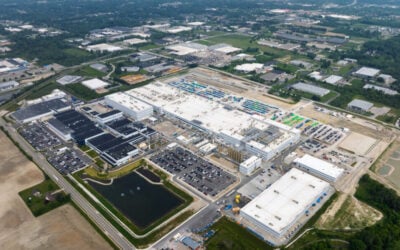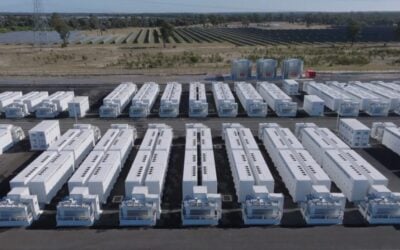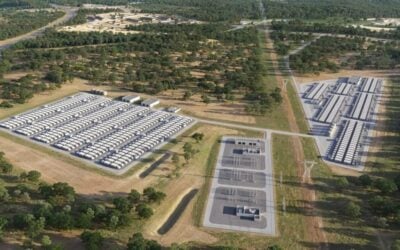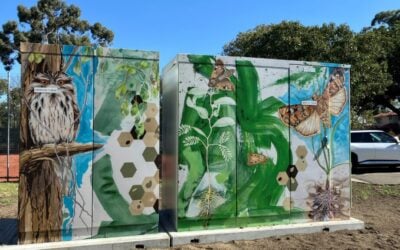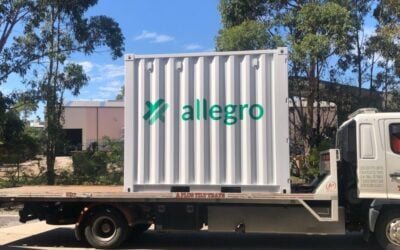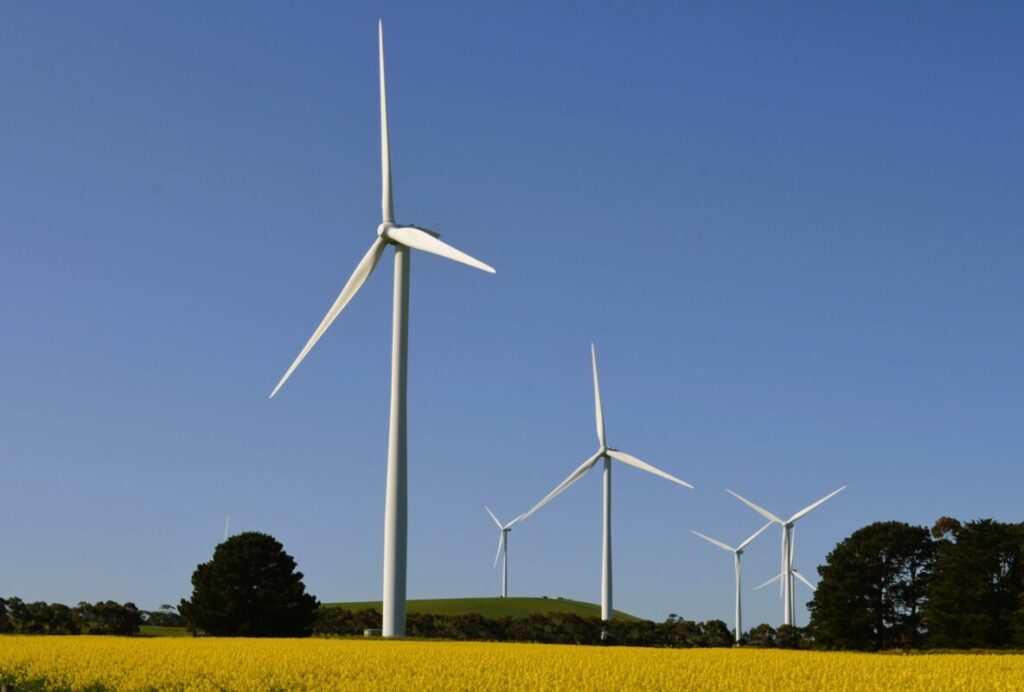
Wind developer WestWind Energy has signed a lease agreement with Australia’s New South Wales government for the development of a 1,500MWh wind-plus-storage site in the south-west of the state.
The Lake Victoria Wind Farm will feature up to 203 wind turbines with a combined installed capacity of around 1GW. It will cost around AU$3.8 billion (US$2.39 billion) to construct and take two to three years to fully assemble. The construction phase is expected to begin in 2029.
Enjoy 12 months of exclusive analysis
- Regular insight and analysis of the industry’s biggest developments
- In-depth interviews with the industry’s leading figures
- Annual digital subscription to the PV Tech Power journal
- Discounts on Solar Media’s portfolio of events, in-person and virtual
WestWind’s project will include up to three battery energy storage systems (BESS) with a total storage capacity of 1,500MWh. A scoping report for the site said the grid-scale BESS would capture the renewable energy generated from the wind plant and distribute it to the grid as required. It is currently being assessed as a State Significant Development.
The site’s BESS was originally expected to feature up to four different systems with a total capacity of 600MW/2,400MWh, but this has since been reduced.
As revealed today (13 February), Crown Lands, which is land held by the New South Wales government on behalf of the public, has negotiated the agreement for a special purpose lease. The lease would provide WestWind Energy with an initial 25-year lease with two seven-year options to extend it for a further 14 years.
Steve Kamper, the New South Wales Minister for Lands and Property, said the Lake Victoria Wind Farm proposal has the potential to deliver major economic investment, well-paid regional jobs, and more green energy for the state.
“The Lake Victoria Wind Farm is a significant clean energy initiative that can play a vital role in powering our economy for generations to come,” Kamper said.
“The rental income will be reinvested into the Crown Reserves Improvement Fund to provide grants to maintain and improve Crown reserves across the state, such as regional showgrounds, war memorials and community sporting grounds.”
Once the wind plant is operational, WestWind Energy will establish a community fund to share the project’s financial benefits. The scheme could be developed in consultation with the local community, and WestWind Energy has committed to contributing a minimum of AU$2,000 per constructed turbine annually.
Wind-plus-storage in Australia
Wind-plus-storage sites, similar to solar-plus-storage, are increasingly popular in Australia and globally as a method to optimise power plants, particularly when it comes to variable renewable energy generation.
There have been several notable developments in Australia in recent months that integrate storage into its design to achieve this feat. Two of which are situated in Tasmania, the island state situated to the south of the mainland.
Cellars Hill Wind Farm, a community-driven initiative led by local landowners, was recently granted ‘Major Project’ status by the state’s government. The development is expected to cost in the region of AU$1.5 billion and feature a 600MW/2,400MWh. The wind element of the site will have a generation capacity of 350MW.
By being declared a major project under the Land Use Planning and Approvals Act 1993 (LUPAA), the site will be assessed by an independent panel assembled by the Tasmanian Planning Commission. The independent panel makes the final decision on the project. It is not subject to an appeal on planning merit but can be appealed under judicial review on legal matters.
Alongside this development, a 450MW wind-plus-storage project is being pursued by developer Goldwind Australia in Tasmania, featuring a 200-400MWh BESS. Last week it was submitted to the Australian government’s Environment Protection and Biodiversity Conservation (EPBC) Act.
Dubbed the Bashan Wind Farm, it is also being proposed for the Central Highlands region. The project would include 56 wind turbines and three substations.

